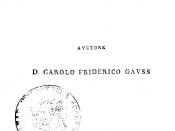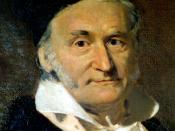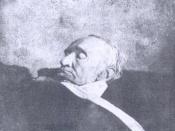Carl Friedrich Gauss was a German mathematician and scientist who
dominated the mathematical community during and after his lifetime. His
outstanding work includes the discovery of the method of least squares,
the discovery of non-Euclidean geometry, and important contributions to
the theory of numbers.
Born in Brunswick, Germany, on April 30, 1777, Johann Friedrich
Carl Gauss showed early and unmistakable signs of being an extraordinary
youth. As a child prodigy, he was self taught in the fields of reading
and arithmetic. Recognizing his talent, his youthful studies were
accelerated by the Duke of Brunswick in 1792 when he was provided with a
stipend to allow him to pursue his education.
In 1795, he continued his mathematical studies at the University
of Göttingen. In 1799, he obtained his doctorate in absentia from the
University of Helmstedt, for providing the first reasonably complete
proof of what is now called the fundamental theorem of algebra.
He
stated that: Any polynomial with real coefficients can be factored into
the product of real linear and/or real quadratic factors.
At the age of 24, he published Disquisitiones arithmeticae, in
which he formulated systematic and widely influential concepts and
methods of number theory -- dealing with the relationships and
properties of integers. This book set the pattern for many future
research and won Gauss major recognition among mathematicians. Using
number theory, Gauss proposed an algebraic solution to the geometric
problem of creating a polygon of n sides. Gauss proved the possibility
by constructing a regular 17 sided polygon into a circle using only a
straight edge and compass.
Barely 30 years old, already having made landmark discoveries in
geometry, algebra, and number theory Gauss was appointed director of the
Observatory at Göttingen. In 1801, Gauss turned his attention to
astronomy and applied his computational skills to...


